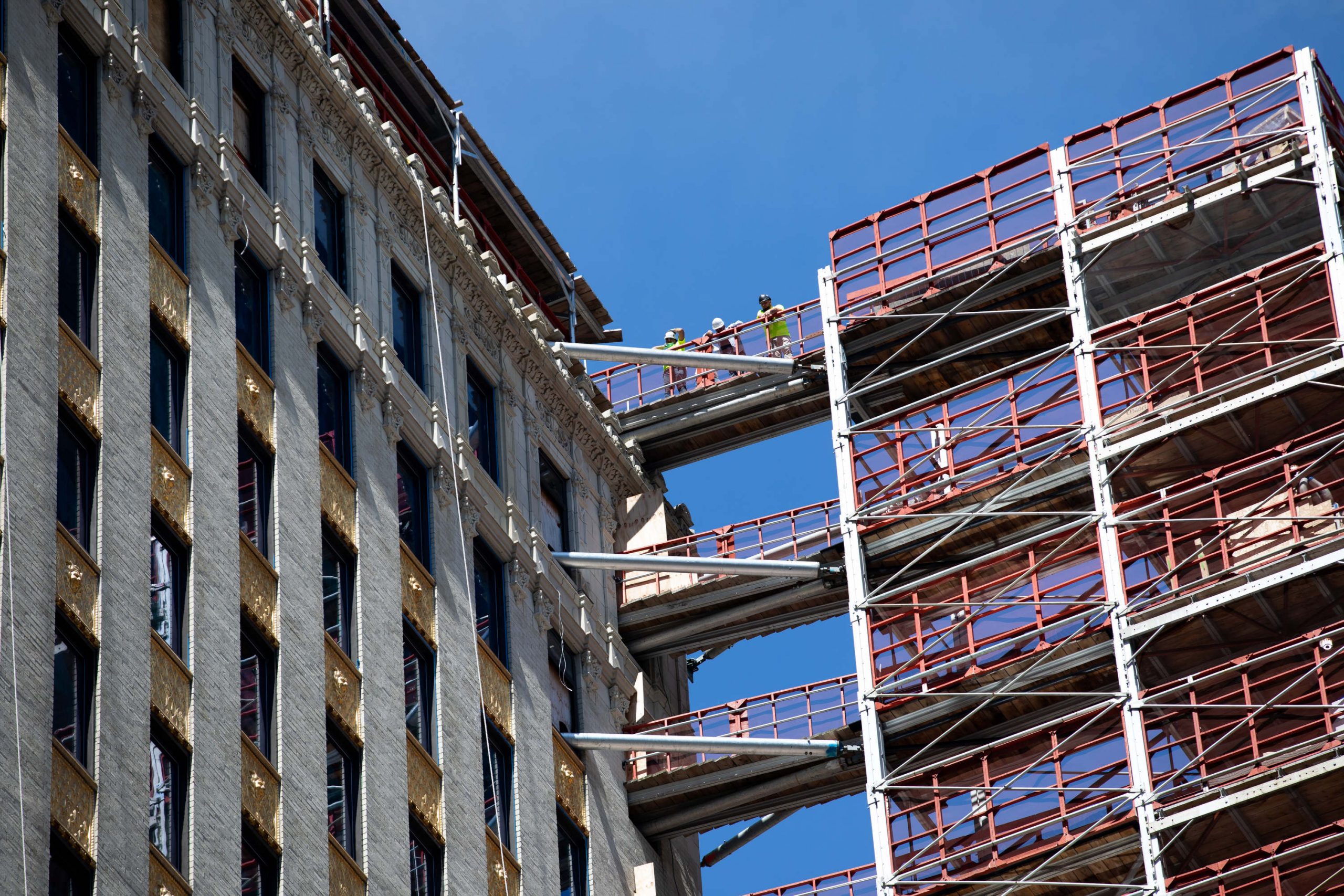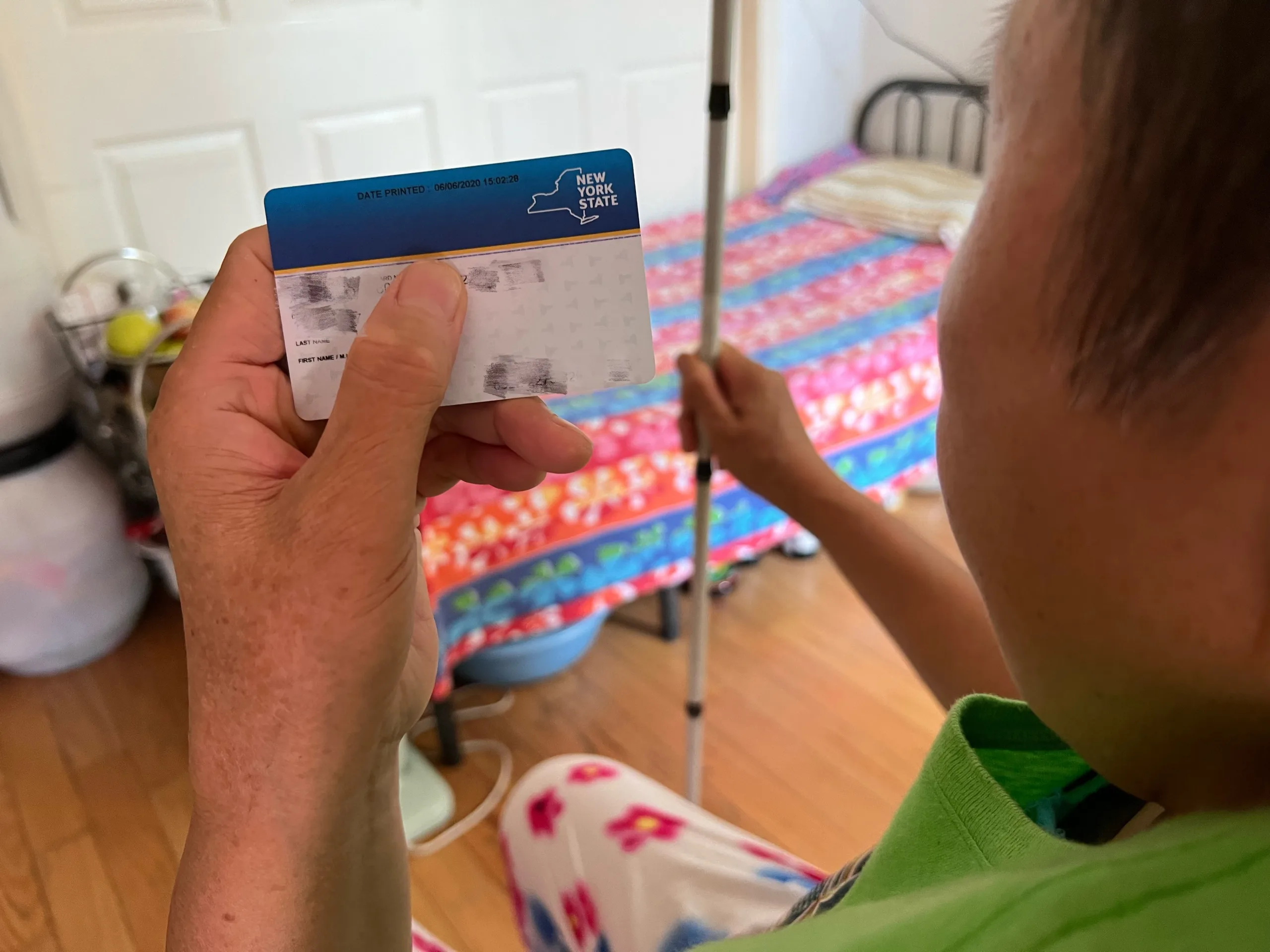Not long after the taxi passed through the metal gates of a building in Staten Island, the protesters began shouting.
One protester accused the driver of transporting “illegals.” Another called the driver a “dirtbag.”
“You’re driving migrants around,” the man yelled, referring to the migrants who were staying at the Island Shores facility, which since September of 2023 has housed migrants exclusively.
The taxi driver yelled back at the protesters, and began helping his passenger carry out a child. The woman quickly left and carried the child into the facility. Other families returning to the shelter looked at the scene unfolding and shuffled into the entrance hastily.
“The truth is, we don’t feel safe,” Nayeli Zambrano, 22, said, who is one of the migrants who lives at the facility. The previous week, Zambrano told Documented she doesn’t leave the shelter after 7 p.m. because of the protesters. She said she has been spit on, cursed at. When she can, she carries her phone in her hand and records them in hopes that she can temper the behavior of the protesters.
Zambrano has been in New York since October and was placed at the Island Shores Senior Residence in the Midland Beach area of Staten Island when she first got to the city and requested shelter at the Roosevelt Hotel, after arriving from her home in Venezuela. She lives at the shelter alone, with her 4-year-old son and says ever since they arrived, the protests against them have been persistent.
“If I knew that all of this was like this,” Zambrano said in Spanish. “I wouldn’t have brought my son.”
Migrants who live at the facility and spoke with Documented said protesters bang on the metal fences, and yell through their megaphones until late at night. They sometimes circle the building from 7 p.m. until midnight. Inside the shelter, the migrants warn each other when the protesters have arrived. Some women migrants told Documented that they have been called “prostitutes” in Spanish, and that they fear for their safety going out alone.
Several migrants said they were concerned about their children. “My son tells me he is afraid that these protesters will hurt me,” said Xiomara Sayago, a 24-year-old migrant from Venezuela who has lived at the facility since November, with her husband and two children, who are 8 years old and 9 months old. When her son sees the protesters, Sayago said, he tells his mother to run. “He is traumatized,” she said.

When they are coming in and out of the shelter, Sayago and her husband place their children in a stroller and cover them with a blanket, so they won’t see the protesters spitting and yelling at them. “There is no need for such humiliations,” Sayago said. “We are families in need.” Outside of the shelter, some parents say their children have been bullied at school for being migrants.
Several of the migrants living at the shelter said they had heard that elderly residents had to move out of the facility, but stressed that they had no choice about which facility they were placed in.
Djenabou, a mother of two from Guinea, who shared only her first name for privacy reasons, said that after arriving in New York about three months ago and asking for shelter at the Roosevelt, the city made the decision about where to place them. “They just brought us here,” Djenabou said in French as she pushed a stroller with her two children sleeping in it. The youngest was 4 months old.
Protests have been ongoing at the site since September of 2023, when local residents and elected officials discovered the complex would be converted to a shelter for migrants from a senior living facility.
Homes for the Homeless — the organization that owns the site — had told those living at the senior living facility with less than two months’ notice that they had to find alternative housing by March of 2023, according to former residents who spoke with press. Former residents also told media outlets they had to rush to find a new place to live.
Months later, elected officials and local residents found out the facility would be used as a migrant shelter, with migrants moving in six months after residents of the home had to vacate. And City Hall said in September of last year that the building was empty long before it was considered as a temporary housing site for migrants, according to the Brooklyn Paper.
When Island Shores first opened as a shelter for migrants in September, 10 protesters were arrested after they blocked a bus transporting immigrants from entering the facility. About 1,000 protesters were present that evening, the Staten Island Advance reported.
Almost seven months after migrants first were placed at the facility, the protests continue. Videos on social media and local reporting show protesters playing loud music, shining flashlights through the windows of the facility into the rooms, and blasting megaphones at night next to the shelter.
On Tuesday, a group of about 20 demonstrators stood outside the shelter in the evening, doing laps around the block of the shelter together. Several had sweatshirts that said “Staten Island Strong.” One wore a shirt that said “bring back our seniors,” and another protester carried an American flag.
Those rallying said they were upset that homeless elderly individuals, including veterans, had been forced to move out of the home, and that migrants were now living there. Several expressed discontent with how Mayor Eric Adams is handling the migrant crisis, and with what they viewed as federal immigration policies that were too lenient.
“They’re here, I’d rather them come the right way, like my great-grandparents came here, but it doesn’t work that way,” said Sal Monforte, who was born and raised in Staten Island, and lives down the block from the facility. “We tell them, basically, we don’t want them here.”
Monforte dismissed migrants at Island Shores who said they did not have a choice about which shelter they were placed in. “That’s not my fault that they didn’t know,” he said.
Also Read: NYC Grapples with Rising Tensions Over Asylum Seekers
Demonstrators denied spitting on the protesters, and scoffed at migrants telling Documented that the protests outside their shelter made them feel unsafe. Protesters said they were not aggressive toward the migrants. They said that it was actually the migrants who spit at them and that children as young as 3 or 4 years old living at the shelter would give them the middle finger, and curse at them.
“We don’t get violent with them,” Monforte said. “I don’t yell at them…But it’s just a matter of time, there’s going to be confrontation.”
When a group of young men and a family walked into the shelter after the sun had gone down, several demonstrators began heckling the migrants. “Welcome to America,” one man yelled at a group of migrants as they walked into the shelter in the evening.
“Free ride for all,” a woman said, raising her voice. “In English, you’re in America now, we got to do that in English!” she said, as the group spoke Spanish to each other.
A handful of police officers kept watch outside the shelter, near metal barricades they had set up.
Homes for the Homeless referred questions to the Department of Homeless Services and the Department of Social Services. City Hall and the two city agencies did not respond to a request for comment.
And now, Djenabou, the mother from Guinea, said, “We are scared to go out.”
“They insult us,” she said about the protesters, “every day.”














